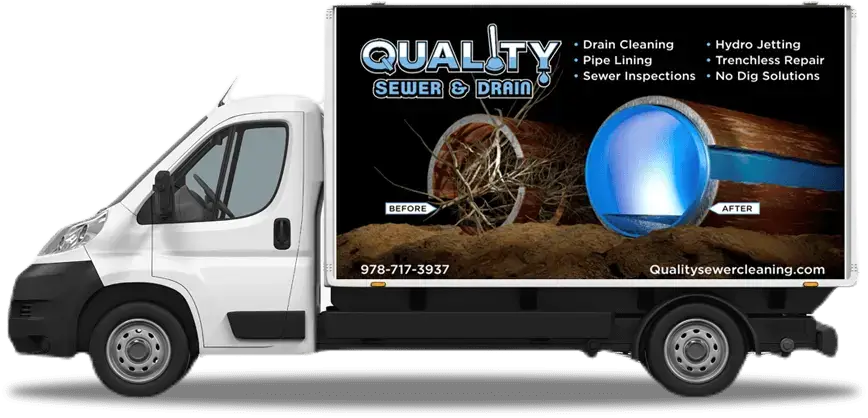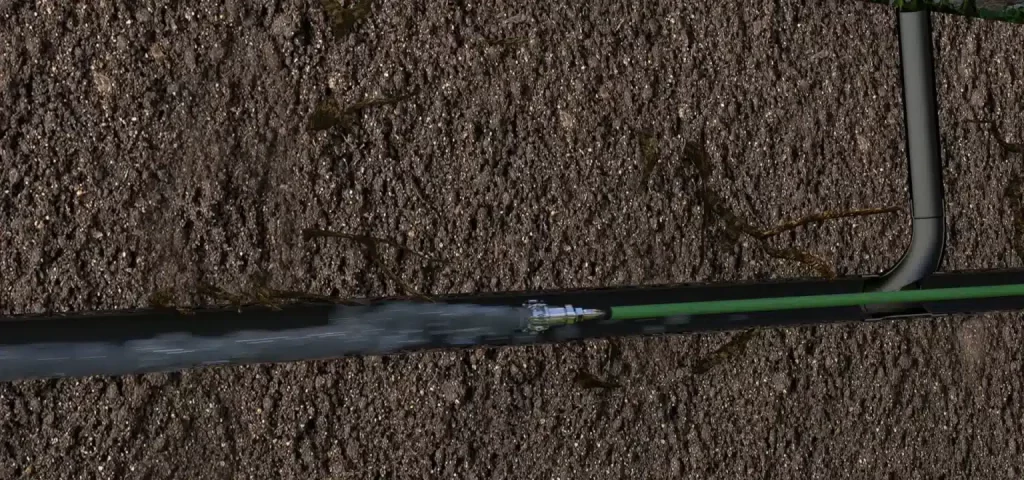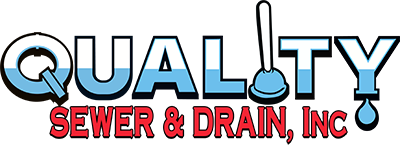Hydro Jetting vs. Traditional Snaking: Which Is Right for Your Drains?

Hydro Jetting vs. Traditional Snaking: Which Is Right for Your Drains?

At Quality Sewer & Drain, we understand how frustrating it is to deal with clogged drains, foul odors, and sluggish plumbing performance. These are more than just minor inconveniences—they’re signs that your pipes may need serious attention. When faced with such issues, homeowners and property managers often weigh the benefits of two primary cleaning methods: hydro jetting and traditional drain snaking.Each method has unique strengths and ideal use cases. Hydro jetting offers high-pressure precision and thorough cleaning, while drain snaking provides quick and simple clog removal. Below we explore both techniques in detail so you can make a smart, long-term decision for your plumbing system.
What Are Hydro Jetting Services?
Hydro jetting services use high-pressure water jets to blast through stubborn clogs and thoroughly clean the inside of pipes. This method removes years of debris, grease, and even invasive tree roots, making it a powerful solution for serious buildup.
What Is Traditional Drain Snaking?
Drain snaking involves feeding a flexible metal cable into your drain to mechanically dislodge clogs. It’s effective for shallow or localized obstructions, particularly those caused by hair or food particles.
How Hydro Jetting Works and Its Benefits
Hydro jetting is a professional-grade cleaning method that relies on water pressure rather than mechanical force. It’s both thorough and environmentally friendly, making it ideal for tough, recurring drain issues.
High-Pressure Water Jetting Explained
A hydro jetting system consists of a water tank, high-pressure hose, and specialized nozzle. The nozzle directs pressurized water through the plumbing system, cutting through grease, sludge, and even tree roots.
Different nozzles are used depending on the type of clog and pipe diameter. The pressure can be adjusted for residential or commercial use, ensuring safe but effective cleaning. Hydro jetting not only clears clogs but restores full pipe diameter, improving flow.
Effectiveness on Grease, Roots, and Hardened Buildup
Hydro water jetting is highly effective in kitchens with grease buildup, homes with hard water mineral scaling, and properties with root intrusion in older sewer lines.
It doesn’t just punch through the blockage—it removes all residue clinging to pipe walls. These deep cleans delay future clogs, which can be especially beneficial in commercial environments or households with high water usage.
Safety and Environmental Benefits
Because hydro jetting uses only water, it’s one of the safest methods for both your pipes and the environment. Unlike chemical cleaners, it won’t corrode metal or leach toxins into groundwater.
When handled by professionals, the procedure is completely safe—even for older plumbing systems. It reduces the need for frequent service calls, ultimately saving you money.
How Traditional Snaking Works and Its Pros & Cons
Drain snaking has been a plumbing standard for decades. It’s a quick, accessible method that most plumbers carry on their trucks. However, it’s not a one-size-fits-all solution.
What Does Drain Snaking Involve?
A snake or auger is a long, flexible cable that’s manually or mechanically fed into a drain. As it winds through the pipe, it pushes through or hooks the obstruction to pull it out.
Snakes come in a variety of lengths and widths depending on the drain being serviced. While this method is effective for superficial blockages, it does not address the cause of recurring clogs or deep buildup in the pipes.
When Snaking Is Effective
Snaking works best for simple blockages like clumps of hair, food particles, or small foreign objects that haven’t traveled too far down the line.
It’s ideal for emergency calls where a single fixture is backed up. Bathrooms and kitchen sinks are common candidates for this method, especially if the clog is caused by something recently introduced into the system.
Limitations and Safety Considerations
The major downside of snaking is that it doesn’t clean the walls of the pipe, which means sludge and buildup are left behind. These remnants can quickly attract more debris and cause new clogs.
In older or fragile pipes, improper snaking can scratch the pipe interior or worsen cracks. It also won’t work well on root intrusion or hardened blockages like scale.
Hydro Jetting vs. Drain Snaking: Side-by-Side Comparison
If you’re unsure which method to choose, consider how they differ in performance, safety, and cost. The decision often comes down to the severity of the blockage and the condition of your plumbing system.
Effectiveness Comparison
Hydro jetting cleans the entire pipe, not just the clog. It removes buildup and prevents future blockages. Snaking only breaks through the immediate obstruction, leaving potential for recurring issues.
Safety & Risk Comparison
Jetting is safe for most pipes when pressure is adjusted appropriately. Snaking, while generally low-risk, can damage old or brittle piping if used too aggressively.
Cost Comparison
Snaking has a lower upfront cost, making it ideal for minor or isolated clogs. Hydro jetting is more expensive initially but pays off by extending the lifespan of your plumbing and reducing future service needs.
When to Choose Hydro Jetting Services
There are certain scenarios where hydro jetting is not just preferred—it’s essential. It provides a level of cleanliness and pipe restoration that no other method can match.
Recurring Clogs or Severe Buildup
If you’re calling your plumber every few months, there’s a deeper issue in your plumbing system. Hydro jetting solves this by thoroughly clearing the line.
This method is particularly effective when buildup is hardened or when multiple fixtures in the home are affected simultaneously. It removes years of grime in a single visit.
Long-Term Maintenance
Businesses like restaurants and hotels benefit from scheduled hydro jetting to avoid costly shutdowns. Homeowners also use it as preventive maintenance, especially in high-use households.
A well-maintained line reduces emergency calls and expensive repairs. Keeping your pipes clean helps protect appliances and improve overall drainage performance.
Eco-Friendly Cleaning
If sustainability matters to you, hydro jetting is the best choice for drain cleaning service. It eliminates the need for chemical drain cleaners that can harm plumbing and pollute water supplies.
It’s also safe for septic systems and prevents long-term wear caused by corrosive materials. You get a deep clean without sacrificing environmental integrity.
When Traditional Snaking Is Sufficient
While not as comprehensive as hydro jetting, drain snaking still has its place. It’s often the first step in emergency plumbing calls and can resolve many minor issues quickly.
Light Blockages and Simple Clogs
If the blockage is shallow, such as hair in a bathroom drain or food debris in a kitchen sink, snaking is usually sufficient.
This method restores flow with minimal equipment and disruption. It’s an excellent first line of defense before considering more advanced techniques.
Convenience and Lower Immediate Cost
Snaking is fast, affordable, and widely available. It’s perfect for tenants, landlords, or anyone needing a quick fix without a big investment.
While it may not offer the long-term results of hydro jetting, it solves the immediate problem and buys time to plan further maintenance.
Why Choose Quality Sewer & Drain for Drain Services
At Quality Sewer & Drain, we evaluate each plumbing issue individually and recommend the best method based on your unique situation. Our experience ensures accuracy, safety, and lasting results.
Expert Hydro Jetting Services
We bring years of experience and professional-grade equipment to every hydro jetting job. Our technicians are trained to adjust pressure safely and clean your pipes completely.
Reliable, Safe, and Efficient Solutions
From diagnostics to service completion, we ensure your plumbing is treated with care. Whether you need emergency snaking or proactive jetting, our team delivers effective results.
Quick Contact and Booking Process
Use our contact us form to book a service or ask questions. We respond quickly, provide transparent quotes, and arrive on time.
Conclusion
Choosing between hydro jetting and snaking doesn’t have to be complicated. Hydro jetting is ideal for deep cleaning, removing stubborn buildup, and maintaining the long-term health of your pipes. It’s a powerful solution for those hard-to-reach clogs, grease accumulation, or tree root invasions that can cause recurring problems. Snaking, on the other hand, is a quick and cost-effective fix for more localized or minor blockages, offering a fast resolution without the need for extensive intervention.
What’s most important is selecting the right tool for the job. Every plumbing system is unique, and factors like the severity of the clog, the type of pipes, and your long-term maintenance goals should all influence the decision. At Quality Sewer & Drain, we take the time to thoroughly assess your situation and recommend the most effective solution tailored to your needs. Whether it’s a one-time fix or routine maintenance, our goal is to keep your plumbing system flowing smoothly and efficiently.
Frequently Asked Questions
What is the difference between hydro jetting and snaking?
Hydro jetting uses pressurized water to clean the entire pipe system, while snaking mechanically breaks through a single clog without cleaning the walls.
Can snaking damage my pipes?
It can if done incorrectly. Always hire trained professionals to avoid damaging old or fragile pipes.
Does hydro jetting eliminate foul drain odors?
Absolutely. By thoroughly cleaning the interior walls of pipes and removing organic buildup, hydro jetting helps eliminate the bacteria and grime that often cause unpleasant odors in drains.
Can hydro jetting prevent future plumbing emergencies?
Yes. Routine hydro jetting reduces the risk of blockages and backups, helping you avoid plumbing emergencies and costly repairs.
Will hydro jetting work if my drains are already slow?
Yes, hydro jetting is often used to treat slow drains by removing the buildup that’s restricting water flow. It’s a proactive solution for restoring drainage efficiency.
